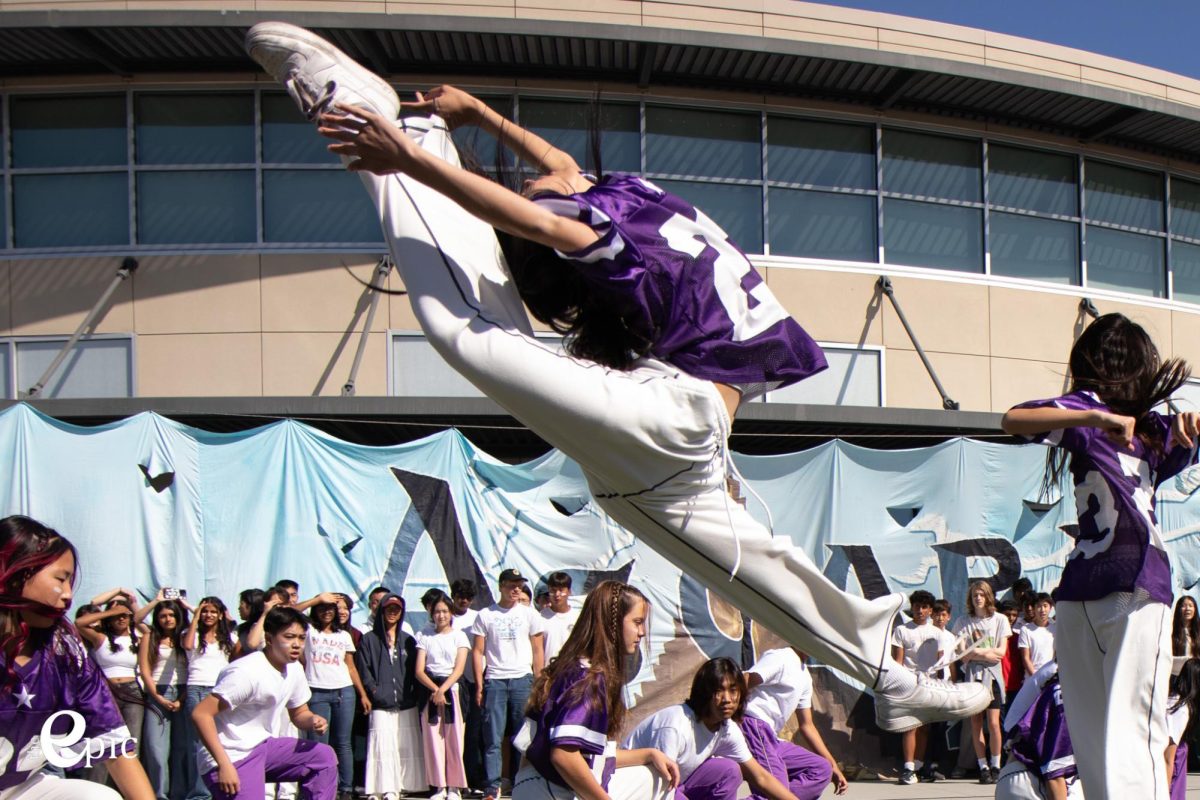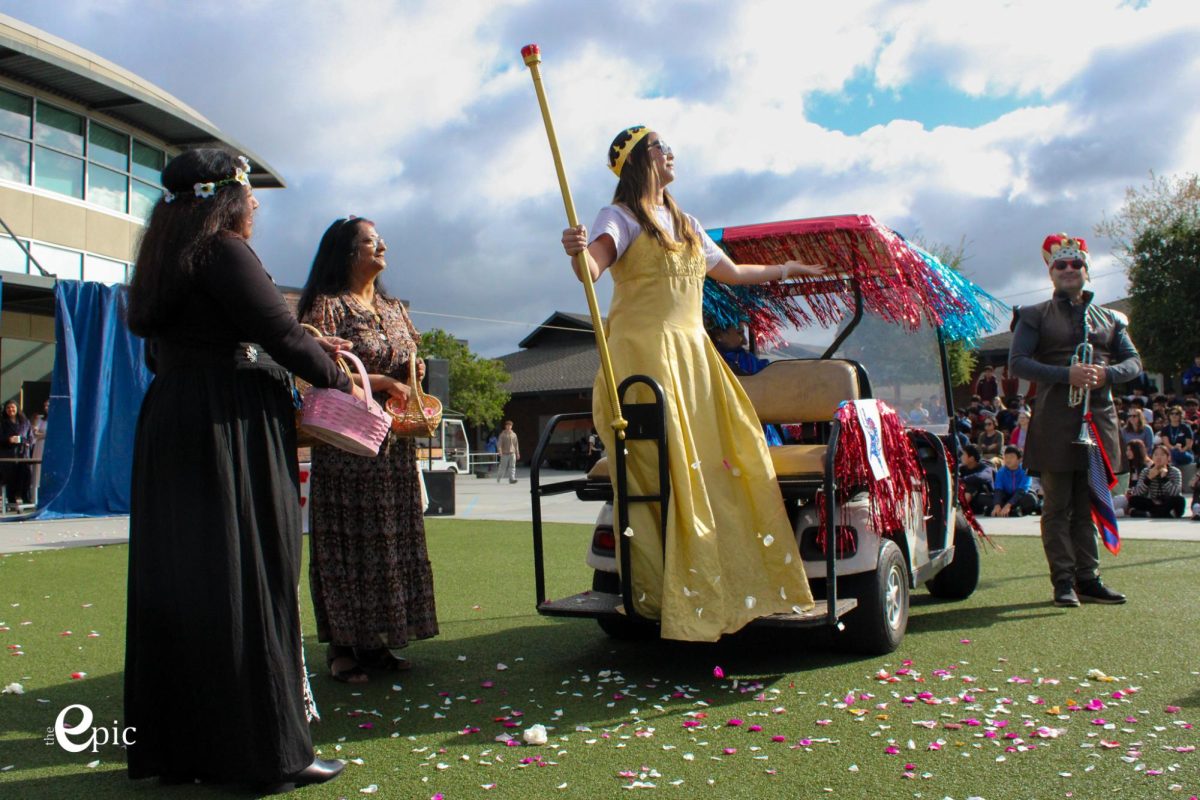Editorial: Creating a more supportive Homecoming environment
A spin on the traditional Uncle Sam Army recruitment poster, the vikings mascot encourages students to participate in homecoming.
November 7, 2022
From skits and dances to backdrops and planter decorations, class officers, Homecoming leaders and participants spend months preparing for Lynbrook’s most extravagant event of the year. However, lack of involvement, communication and support across classes causes stress and a tendency to overwork among leads and avid participants. To foster a more supportive environment, the student body should consider participating more in various Homecoming activities, with more outward leadership recognition from ASB.
The lack of support for Homecoming participants mostly comes from the insufficient number of students willing to get involved, especially in making backdrops and planter decorations. Each planter decoration requires many hours to construct and paint. While the number of participants is adequate during early Homecoming preparations during summer break, it dwindles after the school year starts, making it difficult to continue balancing Homecoming preparations with schoolwork and extracurricular activities. Some student leaders have reported getting as few as four hours of sleep per night in the weeks leading up to Homecoming, working extra hours attempting to complete backdrops and decorations.
“As it got closer and closer to Homecoming and we were all sleep deprived, there were definitely moments of panic, like ‘Oh my god, are we going to be able to get this stuff done?’” said Emma Tu, senior class president and decorations leader. “I think we were exasperated by the fluctuating emotions that come with being sleep deprived.”
Leaders and active participants should be able to complete backdrops and decorations without having to resort to working significantly overtime and paying out of pocket for food incentives.
However, it is also important for ASB to reduce the scale and size of backdrops and decorations to decrease the amount of time that is required to complete them. The number of required planter boxes to decorate can be reduced from the current two to one, and the height of backdrops can be standardized to just 11.5 feet, so students do not unnecessarily paint the section of the backdrop that drags on the ground. Furthermore, the width of backdrops can also be decreased from 90 to 80 feet.
“Backdrops are more hyped up compared to planter decorations, and not a lot of people care about planters,” said Zack Zhou, a sophomore planter decorations leader. “Also, if you make the planters poorly, people will critique you even though they did not help construct them.”
While the leads and participants of dances and skits are able to show off their contributions on stage, those involved in making backdrops and planter decorations do not have their creations attributed to them, thus not receiving the same amount of appreciation. To remedy this, ASB should consider working with class officers to post videos after Homecoming that specifically include behind-the-scenes looks at the participants’ work, montages of the completed planter decorations and interviews with dedicated participants. They should also give shout-outs to the backdrop and planter decoration teams at the concluding pep rally.
Another key aspect that is important for ASB to address is a lack of support for freshmen lacking prior experience with Homecoming. Because ASB only introduces Homecoming to freshmen after summer break starts, they have reduced time to decide leadership roles, meaning they can’t begin preparation until July or August, whereas other classes typically begin near the beginning of summer break. The reduced time allotted for decorations further complicates the event for students already learning how to organize and lead for the first time.
“As freshmen, there are a lot of issues that we did not expect or know how to address, and that delays the general process,” said Amy Tang, freshman class president and backdrop leader.
To resolve this, ASB should organize leadership voting forms for the incoming class during the second semester of eighth grade when all students instead of during summer break. This allows them to decide Homecoming leadership positions without having to wait for class officer decisions.
ASB can also provide more support for freshmen by making the information in the Homecoming Handbook — which is currently more than 30 pages long — easier to digest through an informative video outlining the must-know details. Many leaders, especially freshmen, may choose not to read the handbook due to its length, missing out on important rules. The handbook and its supplementary video should also be shared directly with all students so that leaders are relieved of having to repeatedly explain the rules. Making the handbook’s information simpler to comprehend would decrease confusion, save time and reduce student stress.
“A little more support from ASB would have been nice,” Tang said. “It would have been better to be guided into the process of Homecoming since people were not aware of what to expect for a lot of aspects.”
Homecoming is one of the most fulfilling experiences for students. However, it’s simply not possible for the same quality to be retained in future years without continued, greater involvement of the whole student body. Through these changes, there will be a more supportive environment for Homecoming at Lynbrook that allows students to continue these traditions for many years to come.
“the Epic staff voted 30-2 in favor of this stance with 8 abstaining.”

































































